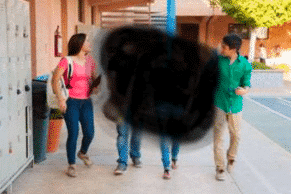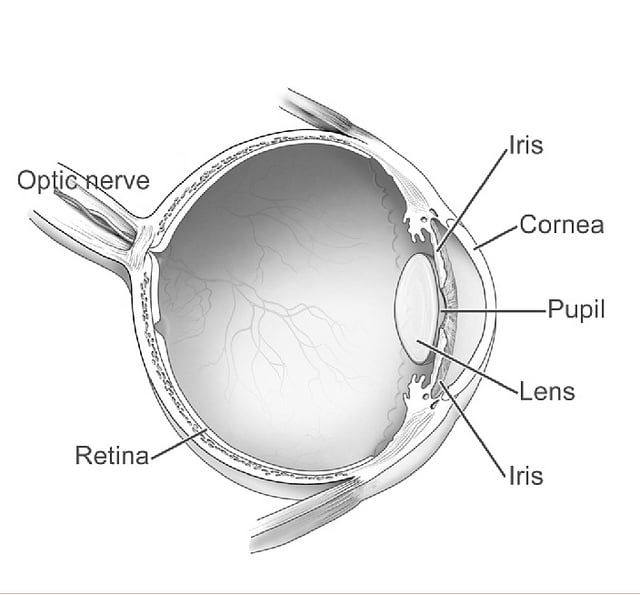Overview | Reduce Effects | Trials | Glasses for Stargardt’s Disease
Stargardt’s Disease Treatment
Stargardt disease, sometimes referred to as Stargardt’s disease, is an inherited eye disease that affects tens of thousands of people in North America. Stargardt disease can cause substantial vision loss; many people with the condition are legally blind. It is a progressive condition, which means the vision loss worsens over time. Unfortunately, there is currently no Stargardt disease treatment to stop vision loss completely.
However, some types of Stargardt disease treatment can slow the progression of vision loss. There are also assistive technologies that can help people with the condition see better.
Stargardt disease is a type of macular degeneration. This means that the condition causes the central portion of the retina, known as the macula, to break down. The macula is responsible for sharp central vision, used for reading, driving a car, recognizing faces, and more. Degeneration of the macula makes these tasks more difficult.

Stargardt disease treatment currently focuses on slowing down the progression of macular degeneration; someday, researchers will develop a Stargardt disease treatment that stops the progression of vision loss completely.
eSight electronic eyewear enhances vision for people living with central vision loss, blurry vision, legal blindness, and more. Try eSight today!
There is Currently No Cure for Stargardt Disease
The delicate anatomy of the eye makes Stargardt treatment difficult. Stargardt disease affects the eye’s retina, which is a light-sensitive layer of tissue lining the interior of the back of the eye. The retinal tissue absorbs light, which carries on it visual information about the outside world.

Special photoreceptive cells in the retina convert the information into electrical impulses, then send these impulses through the optic nerve to the brain, which translates the impulses into the images we “see.”
The sizes of the retina and the macula make them difficult to treat surgically. The retina is about 0.5 mm (0.19 inches) thick, and the tissue itself is extremely delicate. This makes the retina and macula vulnerable to damage during conventional surgical procedures.
Laser surgery
However, doctors can perform laser surgery to treat leaking blood vessels associated with Stargardt disease. Like other forms of macular degeneration, Stargardt disease can sometimes be “wet,” which means abnormal blood vessels grow beneath the retina. These blood vessels can leak blood and other fluids into the retina and macula, which can damage retinal tissue and interfere with vision. Laser surgery destroys the abnormal blood vessels to halt the damage.
Injections
Stargardt disease treatment may include injections of special medications, known as anti-VEGF drugs, into the eye. Anti-VEGF (anti–vascular endothelial growth factor therapy) drugs block the growth of abnormal blood vessels into the macula. Regular injections of anti-VEGF drugs keep the growth of blood vessels under control. The doctor uses anesthesia first, so the injections are painless.
Experience significantly improved vision today. Speak to an expert eSight advisor to learn more.
How to Reduce Effects of Stargardt’s
In the absence of a curative Stargardt disease treatment, doctors often recommend three strategies to help patients reduce the potential harm the disease causes:
- Reducing the retinas’ exposure to damaging ultraviolet light
- Avoiding foods rich in vitamin A, as the vitamin can contribute to the accumulation of lipofuscin, a fatty substance that forms yellowish flecks in the retina
- Maintaining a nutritious diet and good overall health; smoking and being overweight may contribute to more rapid degeneration of the macula, while eating oily fish may reduce the risk of macular degeneration

Tomorrow’s Stargardt Disease Treatment
While there is currently no cure for Stargardt disease, researchers continue to work towards developing a Stargardt disease treatment that slows the progression of the condition. A number of research projects are underway across the globe.
Gene therapy
Researchers in the United States and France are performing clinical trials to test gene therapy. Stargardt disease is an inherited condition that affects the gene ABCA4, which provides the body with instructions for making the ABCA4 protein important to the retina. The protein is active when the retina converts the light into electrical impulses, an action that contributes to the formation of potentially toxic substances that can cause damage to the photoreceptor cells in the retina. The ABCA4 protein removes one of these toxic substances from the photoreceptor cells. People with Stargardt disease have mutations in this gene, which means their eyes do not produce the protein to remove toxic substances before they damage the retina.
Gene therapy provides the body with a corrected version of the ABCA4 gene, which allows the eyes to make the ABCA4 protein. Developing gene therapy for Stargardt disease has been difficult because medical professionals usually use human-engineered viruses to deliver gene therapies, but the viruses they currently use are too small to carry the relatively large ABCA4 gene. Researchers have tried modifying larger viruses to carry the gene, but with little success; the technique is not yet available to the patients that need it.One biotechnology company recently announced a technique that delivers the gene in two halves, which recombine to form the fully functional gene once they are in the retina. Another company is using chemically modified lipids, or fat molecules, to deliver the ABCA4 gene.
Stem cell therapy
Stem cell therapy also holds promise as a Stargardt disease treatment. Injecting embryonic stem cells into the eye appears to replace missing cells damaged by Stargardt disease, without causing side effects. Research suggests the treatment may have even helped improve patients’ vision.

eSight’s low vision electronic eyewear significantly enhances vision, empowering you to explore new possibilities in school, work, and home. See what’s possible with eSight.
Available Assistive Technology as an Alternative to Treatment
Until researchers develop a Stargardt disease treatment that stops the progression of macular degeneration, those with vision loss can use assistive technology to see better. eSight has a long history of helping people with Stargardt disease.
In fact, Conrad Lewis founded eSight as the result of his desire to help his two legally blind sisters – who have Stargardt disease – see. Lewis put all of his skills as an electrical engineer to use, designing gadgets and tinkering with access software he’d encountered over the years at trade shows.

His primary goal was to create a product that could help people living with Stargardt disease and other visual impairments not only see, but live independently and be truly mobile. Lewis wanted to provide a comfortable, all-in-one solution that closely mimics how sighted people see.
eSight
After several years of exhaustive research and development, along with several millions of dollars in investments, eSight introduced its first prototype in 2013. In the years since, eSight has pushed the boundaries of vision technology.

eSight is an assistive technology that uses a state-of-the-art camera, liquid lens and a high-definition display powered by smart algorithms to create clear, enhanced vision of up to seven lines on an eye chart for many people who are legally blind. It also features a sleek, comfortable design and an easy-to-use remote control to adjust focus, brightness, contrast and zoom.
eSight’s low vision assistive technology is perfect for users of all ages, which makes it just right for children and adults with Stargardt disease. While eSight is not a Stargardt disease treatment, it can help those with Stargardt disease gain visual independence.
80% of people with Stargardt’s disease report sight enhancement when they try eSight’s vision enhancing glasses. Try eSight today!
